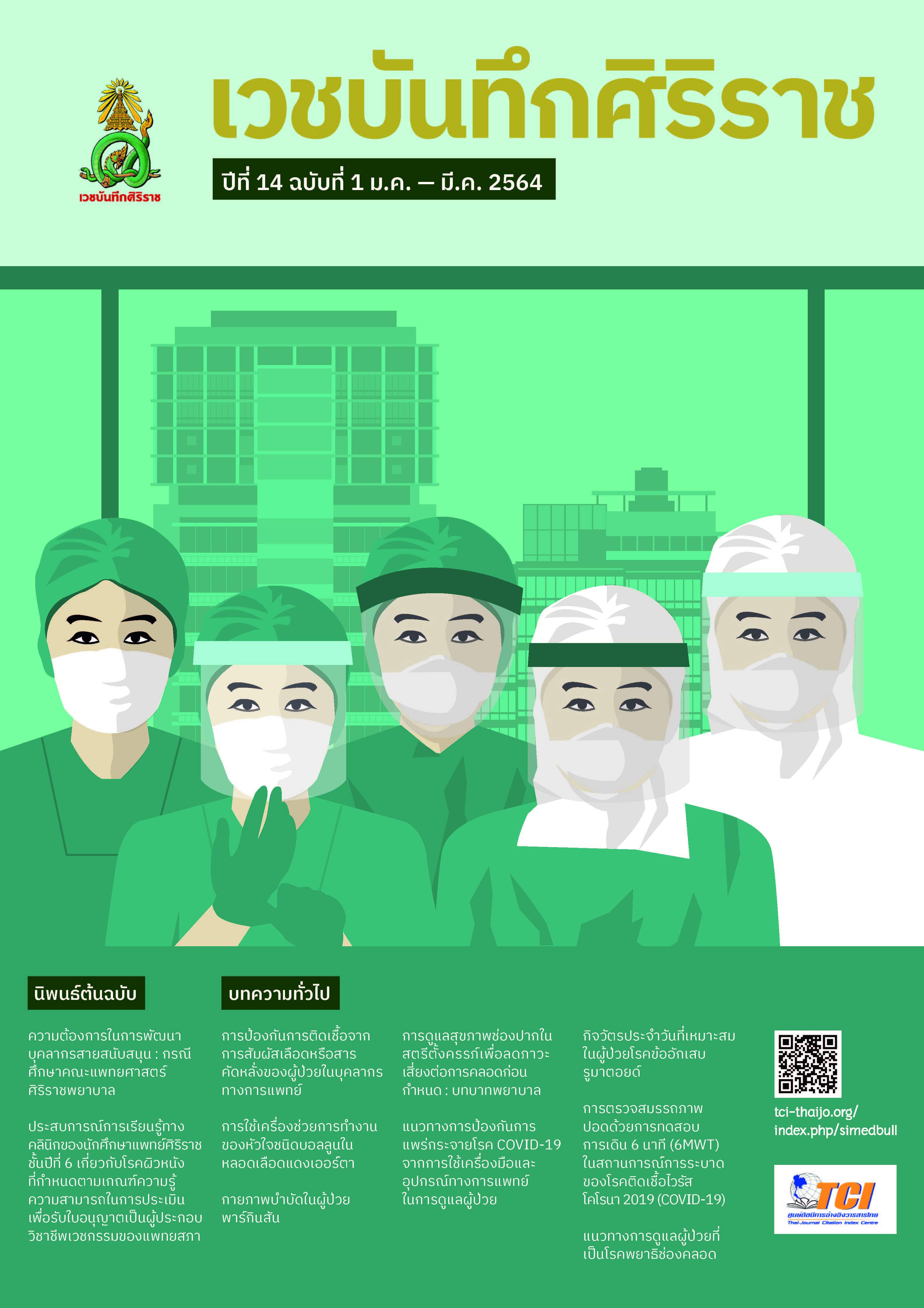Occupational Post-Exposure Prophylaxis for Blood-borne Pathogens
Main Article Content
Abstract
Healthcare personnel have potential for exposure to blood and other infectious substances including contaminated medical devices. Despite appropriate work practices and personnel protective equipment use, occupational exposures to blood and body fluids frequently occur. This article provides knowledge about blood-borne pathogens exposure in healthcare-related works and local guideline for the management of occupational exposure to common blood-borne pathogens, including HIV, HBV and HCV in Siriraj hospital. Appropriate wound care, prompt report and risk assessment, post-exposure prophylaxis with antiretroviral drugs and vaccination as indicated can mitigate risk of acquiring infection to these pathogens.
Article Details
References
CDC. Updated U.S. Public Health Service Guidelines for the Management of Occupational Exposures to HBV, HCV, and HIV and Recommendations for Postexposure Prophylaxis. MMWR Recomm Rep. 2001;50(RR-11):1-52.
Bell DM. Occupational risk of human immunodeficiency virus infection in healthcare workers: an overview. Am J Med. 1997;102(5B):9-15.
Henderson DK, Fahey BJ, Willy M, Schmitt JM, Carey K, Koziol DE, et al. Risk for occupational transmission of human immunodeficiency virus type 1 (HIV-1) associated with clinical exposures. A prospective evaluation. Ann Intern Med. 1990;113(10):740-6.
Cardo DM, Culver DH, Ciesielski CA, Srivastava PU, Marcus R, Abiteboul D, et al. A case-control study of HIV seroconversion in health care workers after percutaneous exposure. Centers for Disease Control and Prevention Needlestick Surveillance Group. N Engl J Med. 1997;337(21):1485-90.
Werner BG, Grady GF. Accidental hepatitis-B-surface-antigen-positive inoculations. Use of e antigen to estimate infectivity. Ann Intern Med. 1982;97(3):367-9.
Lanphear BP, Linnemann CC, Jr., Cannon CG, DeRonde MM, Pendy L, Kerley LM. Hepatitis C virus infection in healthcare workers: risk of exposure and infection. Infect Control Hosp Epidemiol. 1994;15(12):745-50.
สำนักโรคเอดส์ วัณโรค และโรคติดต่อทางเพศสัมพันธ์, กรมควบคุมโรค กระทรวงสาธารณสุข. แนวทางการตรวจรักษาและป้องกันการติดเชื้อเอชไอวี ประเทศไทย ปี 2560. กรุงเทพมหานคร: โรงพิมพ์ชุมนุมสหกรณ์การเกษตรแห่งประเทศไทย จำกัด; 2560.


